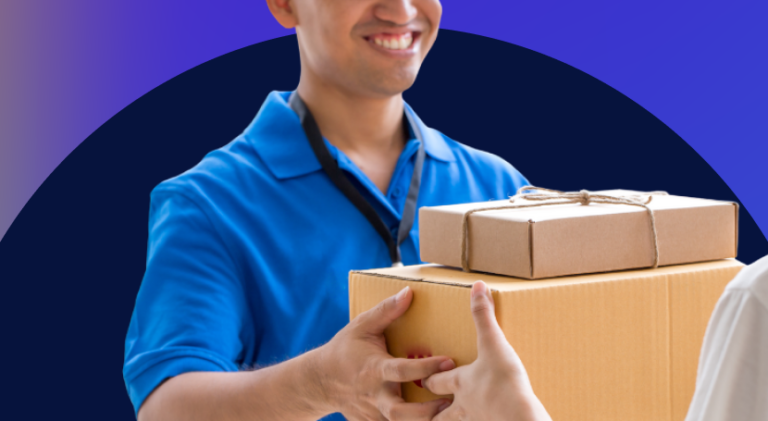There is often a disconnect between the information in the CRM, and the data available to the sales/customer support team. Find out how you can solve this issue and more with the Toku for Salesforce call centre integration.
The rise of the Courier, Express and Parcel (CEP) industry has made a significant impact on logistics and delivery companies, effectively transforming a relatively predictable brick-and-mortar B2B-based industry into a vibrant, B2C-centric sector that relies on technology to enable growth. The CEP industry has grown at a rate of 9% annually and is set to surpass the USD $343 billion dollar mark next year. While North America and Western Europe are responsible for a portion of this growth — 6% and 5% respectively — the Asia-Pacific region, with a rapidly expanding affluent middle-class, is responsible for the lion’s share of CEP growth at 14%. That middle-class is largely comprised of millennials who, by 2020, will be the de facto consumer segment of choice with 70% of worldwide spending being attributed to them.
This market segment is a sign of the times. Millennial consumers rely on technology — primarily mobile — to order their favorite goods & services. Apps driven by state-of-the-art mobile infrastructure and SMS tech have enabled millennial consumers to completely change how deliveries are done.
In this article we’ll explore these changes and look at how technology has facilitated this rapid growth.
The final mile in logistics and delivery
From a supply chain perspective, core mechanisms remain relatively unchanged: orders are received, and products move through established processes involving manufacturers, brands, retailers, wholesalers, distributors and shippers. Whether local or international, the large-scale transport of products hasn’t drastically changed. Fixed costs remain high and lower yields per package, driven by the combination of multiple products within a package, have resulted in costs rising faster than revenue.
The battle for profits starts when the product arrives on the ground and is ready for delivery: the “final mile,” according to the CEP industry.
At this stage, consumer behaviour and expectations, fueled by real-time mobile technology, have resulted in the following:
- High degree of competitiveness among delivery companies as power shifts to consumer;
- Consumer demand for low prices driven by Internet-enabled buying/delivery options;
- The need for a seamless ordering & delivery experience (i.e., delivery control); and,
- A consumer preference for a high level of convenience (i.e., delivery location and timing).
Taking control
The stunning changes in the CEP industry are a result of the convergence of a rapidly rising consumer-based middle-class across Asia and the growth of mobile technology, particularly SMS messaging integration.
On the front-end, mobile apps enable consumers to easily compare the prices of products across a wide range of businesses and, once selected, be able to specify exactly how those items are delivered. In short, mobile tech has provided consumers with delivery control (i.e., transparency) and access to convenience (i.e., location and timing of deliveries).
On the back-end, SMS technology enables real-time communication between logistics providers and consumers without compromising user security and while maintaining delivery transparency.
Mobile and SMS engagement
Mobile and SMS technology have transformed the entire consumer purchasing experience into a seamless journey. Companies now use SMS to communicate with their customers throughout the buying lifecycle, from SMS coupon vouchers to order notifications and post-sales surveys. Behind-the-scenes, number masking technology protects sensitive customer information during communications with service providers.
The tech savvy and highly mobile millennial generation has forced industries to quickly adapt or be lost in this era of digital transformation. Few sectors have been affected by the mobile revolution as much as the CEP industry. The winners are those who can accommodate these changes and offer the kind of delivery transparency and options that modern consumers are looking for.
Delivery control
Before mobile and SMS tech, consumers relied on telephone calls (or a physical visit) to a shipper in order to get their delivery status. Pre-Internet, this involved delivery companies calling their distributors and confirming status — more often than not an employee had to physically look at boxes in a warehouse to ensure that a parcel was put on to a delivery truck. Obviously, things have changed quite a bit.
Tracking codes, RFID tech and the Internet have enabled shippers to quickly determine the location and status of packages during the last mile of delivery. For consumers, particularly in Asia, the most relied-on method is the SMS text.
Automated SMS notifications offer a high degree of transparency to consumers who want to be kept in-the-loop in terms of delivery status. Texts can inform consumers of precise package location and estimated delivery time. They also facilitate deeper engagement, as recipients can use texts to communicate directly with shippers and/or drivers to facilitate data accuracy and delivery details.
Companies also use SMS and automated voice calls to confirm whether a customer is home so that delivery routing can be adjusted on-the-fly. This saves valuable time, and reduces costs, for companies who seek to continually optimise the delivery workflow.
Delivery options
An IT savvy middle-class has facilitated the need for competitiveness in the CEP industry. This can be seen in the availability of delivery options available for consumers. While deliveries are traditionally performed by courier delivery providers such as DHL or FedEx, the rise of crowd-shipping has empowered the efficient delivery of products using non-traditional means.
Crowd-shippers are mobile app-driven transport companies—such as Gojek, Uber, Grab and Lyft—that leverage underutilised vehicles to pick up & deliver parcels on pre-booked routes. For example, while en route to pick up a customer, a Gojek car can stop to pick up a parcel for delivery. Later in the day, the driver can deliver the package when the destination aligns with another customer pick-up point.
As expected, crowd-shipping relies on mobile tech and SMS messaging to facilitate driver-customer communication, arrange for meeting/pick up spots and to determine delivery status in real time.
A highly competitive “final mile” landscape means that shippers need to accommodate consumers across different areas, including rural locations. In these instances, particularly in some areas of Southeast Asia, there are spots not served by Internet connectivity. This challenge can be mitigated by enabling drivers to send an SMS text to confirm successful delivery or, in areas with no mobile signal, a driver can confirm delivery using a landline phone to access an Interactive Voice Response (IVR) system.
Conclusion
The CEP sector is not alone.
A wide variety of industries, from healthcare to financial services, are facing the immediate need to adapt to consumer expectations or else be overtaken by competitors. The universality of mobile technology and SMS messaging, particularly by upscale consumers in Asia, has completely changed the landscape of how companies engage with their customers.
Singapore-based Toku empowers businesses to use its CPaaS platform to broaden customer engagement via its family of API-based solutions and standalone business products. Our technology gives businesses the tools they need to meet the needs of modern consumers.
 Thomas Laboulle
Thomas Laboulle 


 Girish Dharmaraj
Girish Dharmaraj 
 Rosaline Oh
Rosaline Oh 
 Ana Castrillon
Ana Castrillon